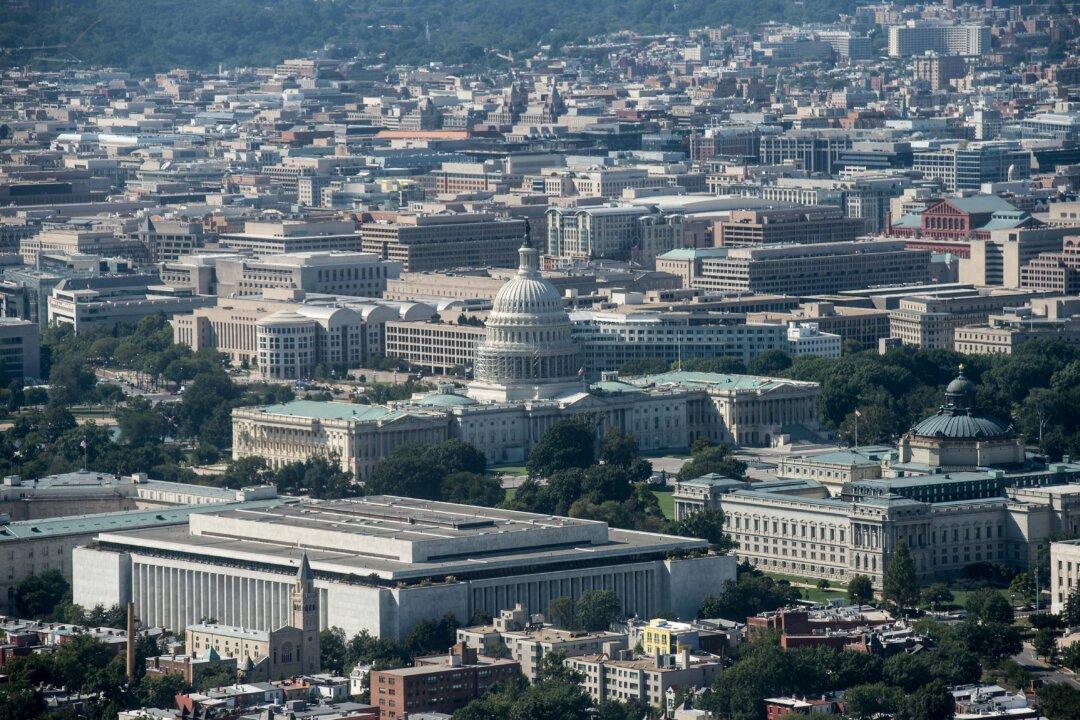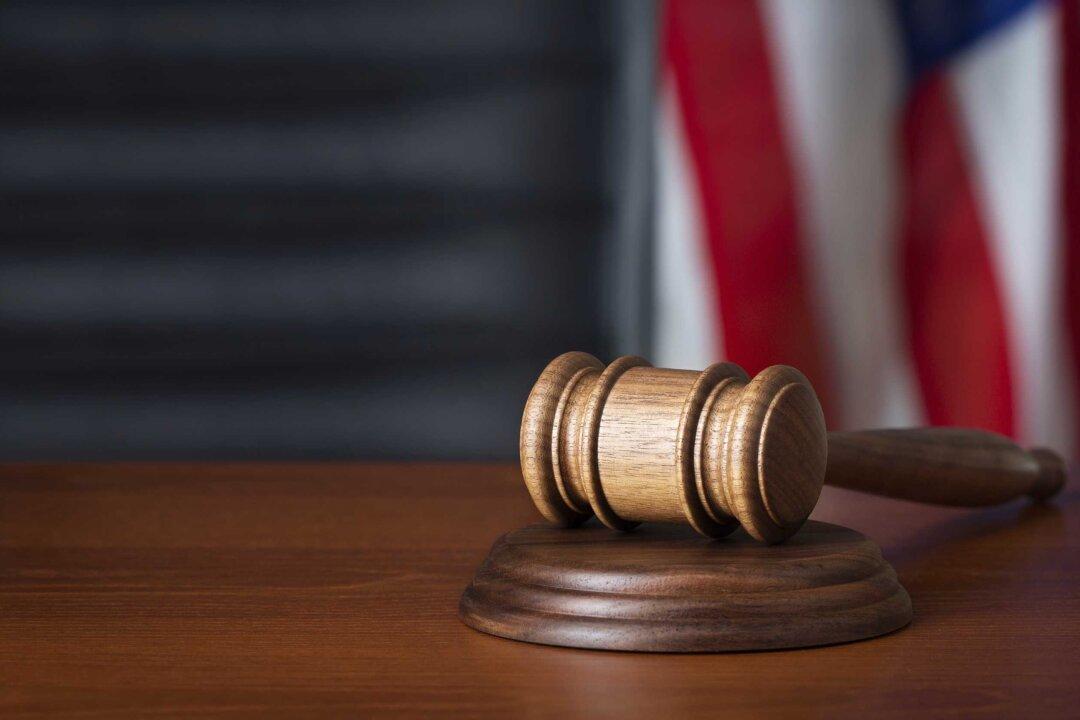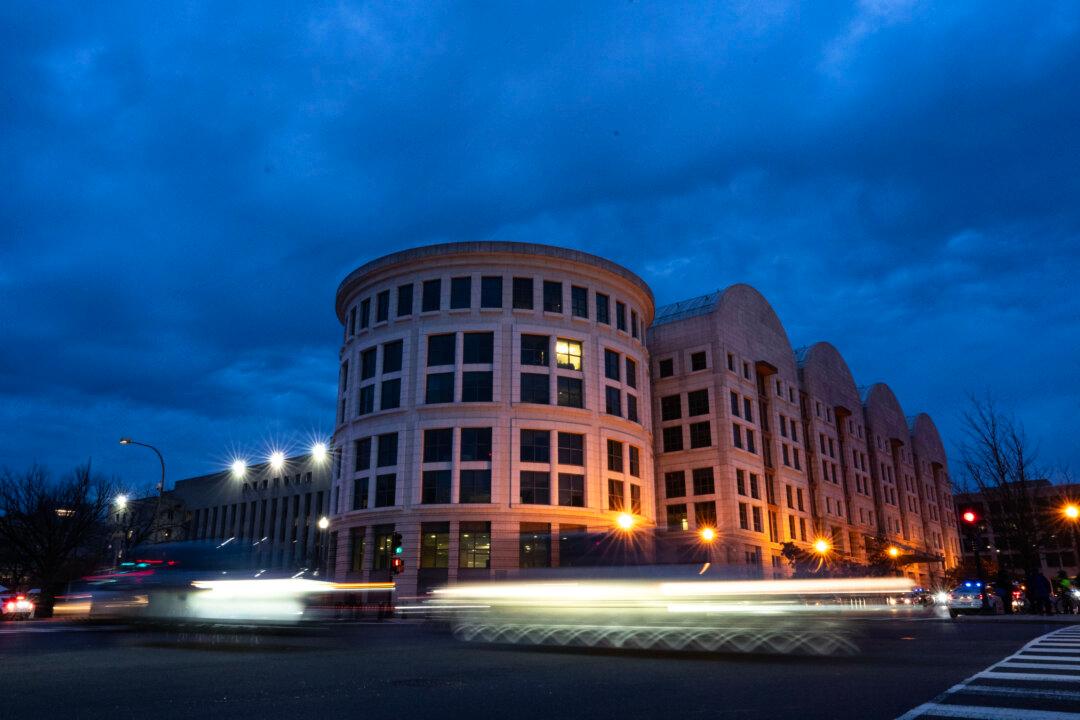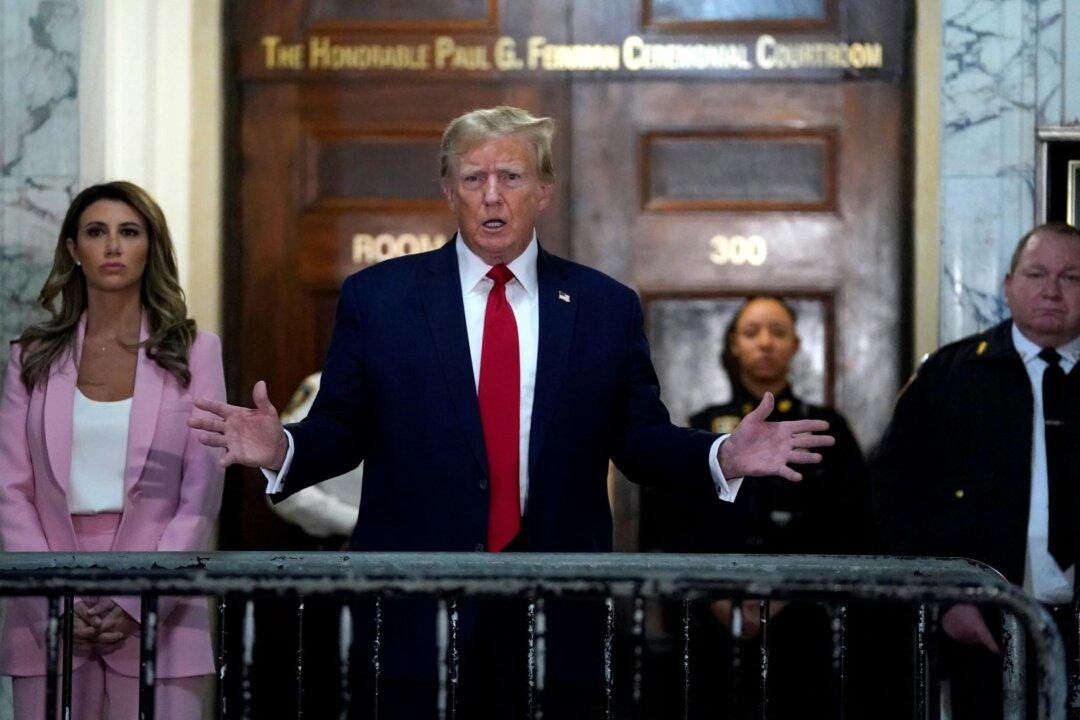News Analysis
The newly disclosed video shows a dark SUV pulling up to the headquarters of the Democratic National Committee (DNC) in Washington, D.C., at 9:44 a.m. on Jan. 6, 2021. It sits for several minutes until a uniformed man with a bomb-sniffing dog enters from the right and steps up to the vehicle. The driver complies with his command, the dog sniffs inside and outside the car which is soon allowed to enter the parking garage. The man and his dog exit back to the right.






